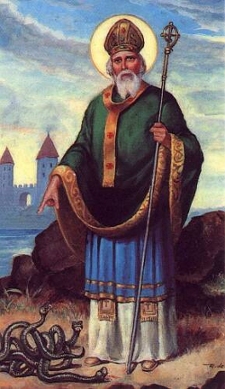
A History of St. Patrick’s Day
- By Kyle Glatz --
- 17 Mar 2015 --

Celebrated as the world’s most popular holiday for Irish culture, what does St. Patrick’s Day truly commemorate?
Many people understand the basic tenets of St. Patrick’s Day, which involves imbibing a fair amount of alcohol and being merry with one another. However, the holiday has a rich history within the Irish community, particularly the Catholic community. Now, it is being purveyed throughout the United States and other areas as an Irish community celebration. Let’s take a closer look at the history of the holiday and the religious connotations that it carries.
Who Was St. Patrick?
The individual for whom the holiday was named was born in Britain while it was under Roman control in the 4th century. He was taken to Ireland as a slave at the age of 16, but later escaped back to Britain. Once he was free, he made it his personal mission to go back to Ireland so that he would have the chance to introduce Christianity to the nation. He established monasteries, Christian schools, and churches that were dedicated to spreading and upholding Christianity. His good works inspired a variety of local legends about his character; one even saying that he was personally responsible for driving all of the snakes from Ireland.
How Did St. Patrick’s Day Come To The United States?
St. Patrick’s Day did not appear in the United States until the year 1737. At the time, it was confined to major city areas where there was a high population of Irish immigrants. For example, Boston was the first city to hold a parade in the year 1737, and it soon spread to other cities such as Chicago in years to come. Now it has attracted the attention of individuals across the United States, though it has lost some of its religious nature now that non-Catholics are enjoying the holiday as well.
Still, it is being celebrated in countries such as England, Ireland, Australia and other places that have a heavy Irish or Catholic population.

The Importance Of Shamrocks
One of the major symbols of St. Patrick’s Day is that of the shamrock. This clover plant has three grouped leaves and has been integrated as a symbol of divinity. Specifically, in the Catholic Church, they have been adopted as a sign of the Trinity, the Father, the Son, and The Holy Spirit.
A tradition that was spawned as a result of individuals wearing a shamrock in their lapel is “Drowning the Shamrock,” where the wearer puts their shamrock in their final drink of the night and drinks it down.
Of course, there are some variations between nations on the traditions of St. Patrick’s Day, with leprechauns, music, and even the inclusion of specific alcoholic beverages.


















